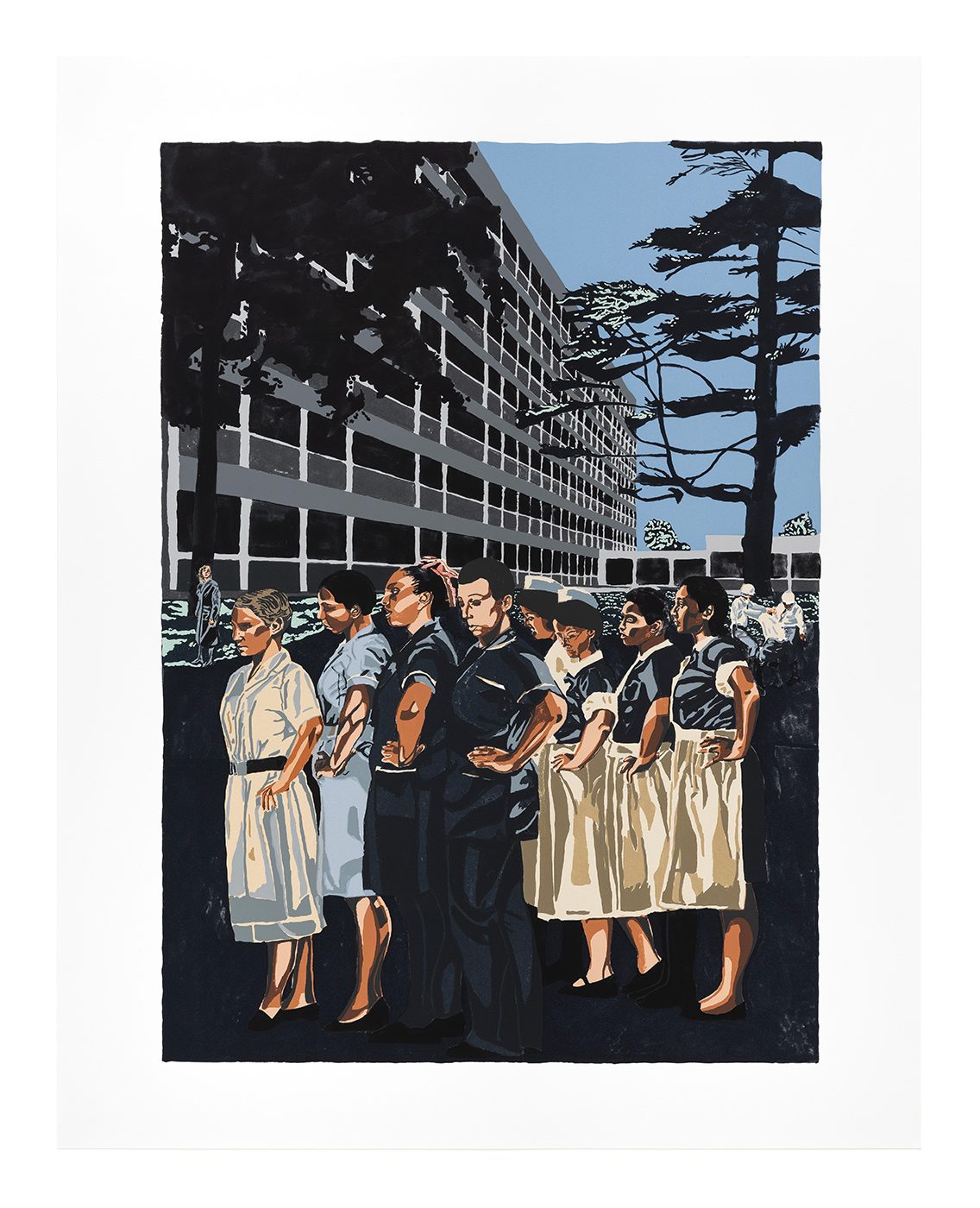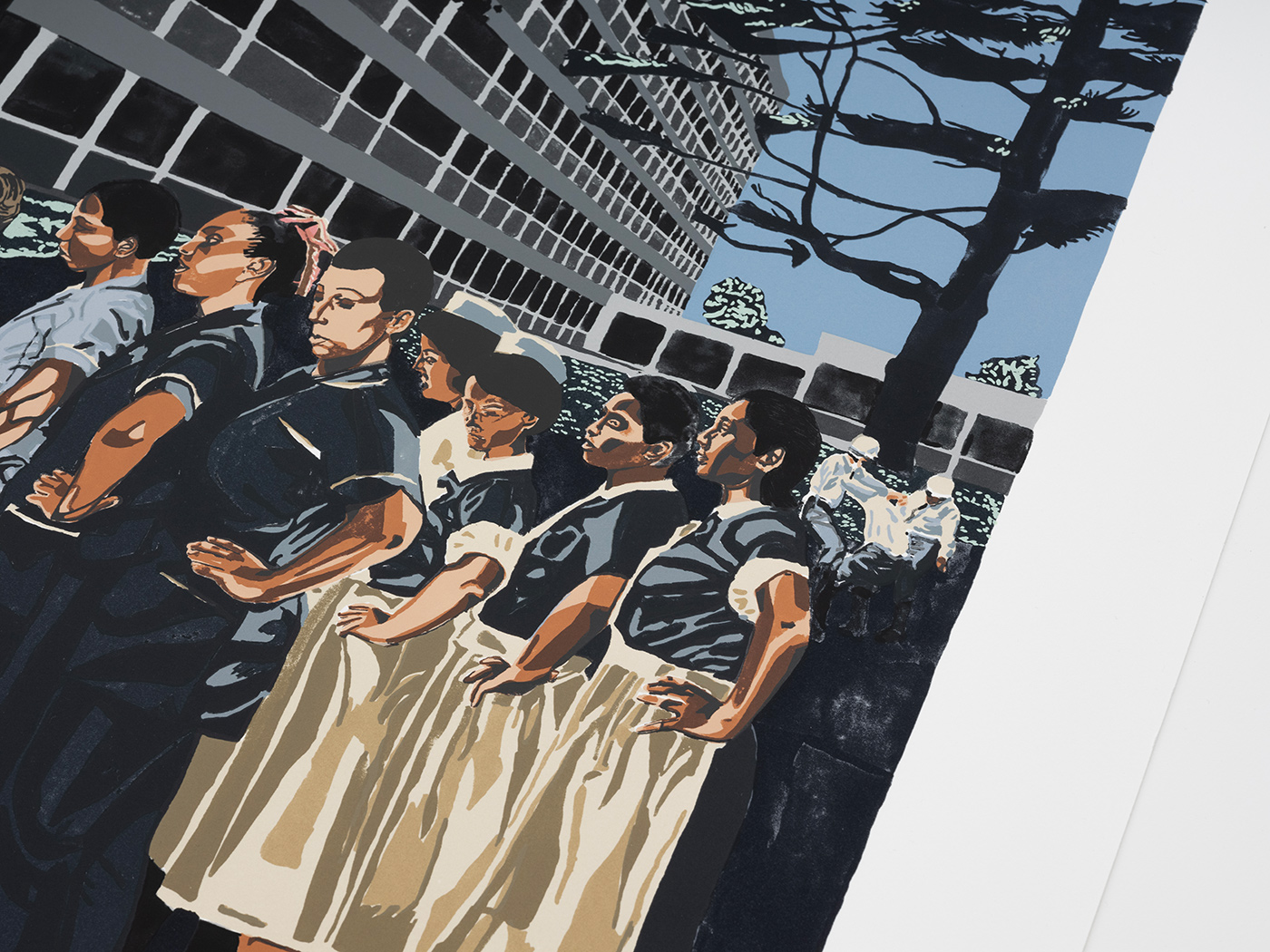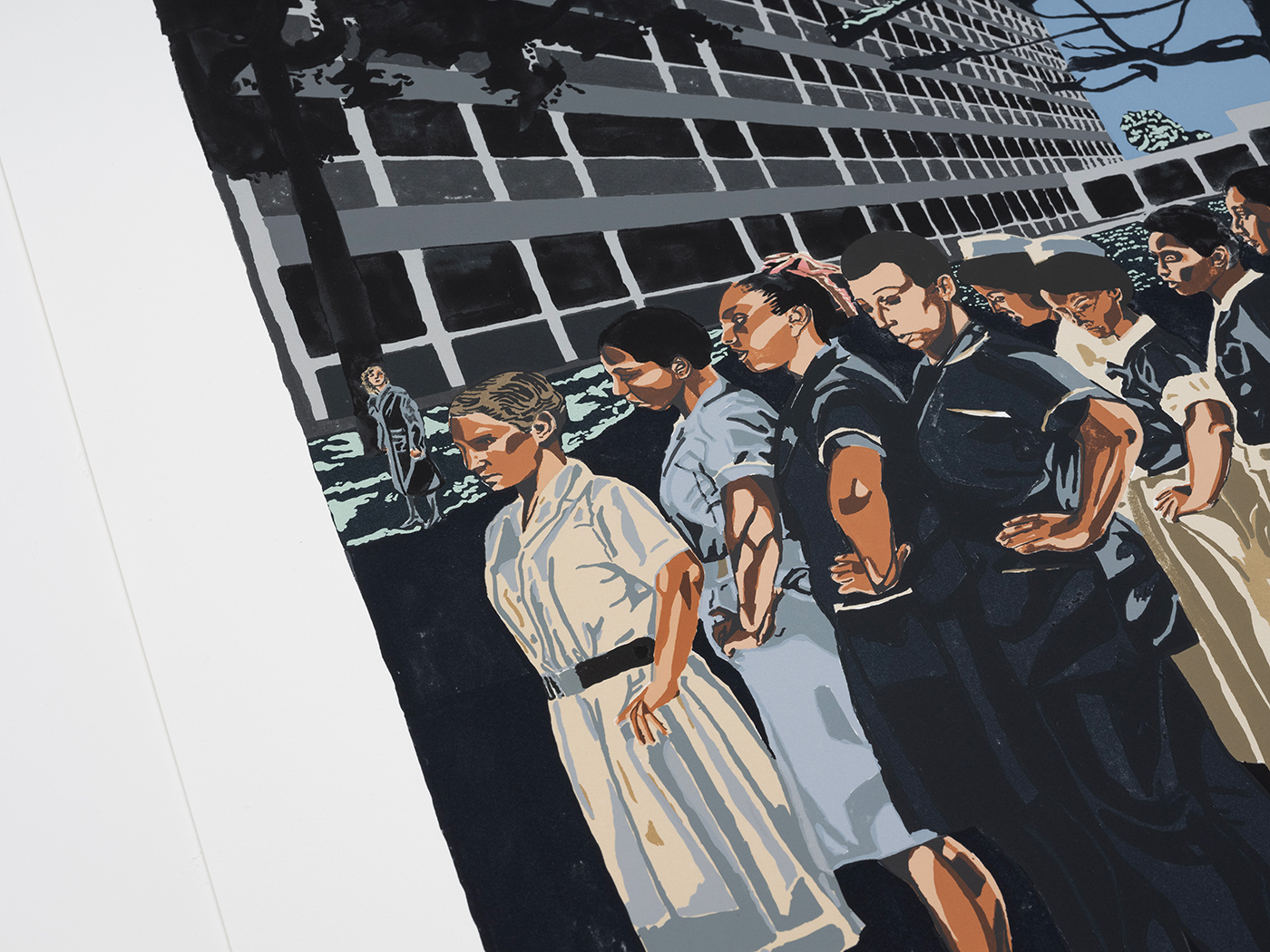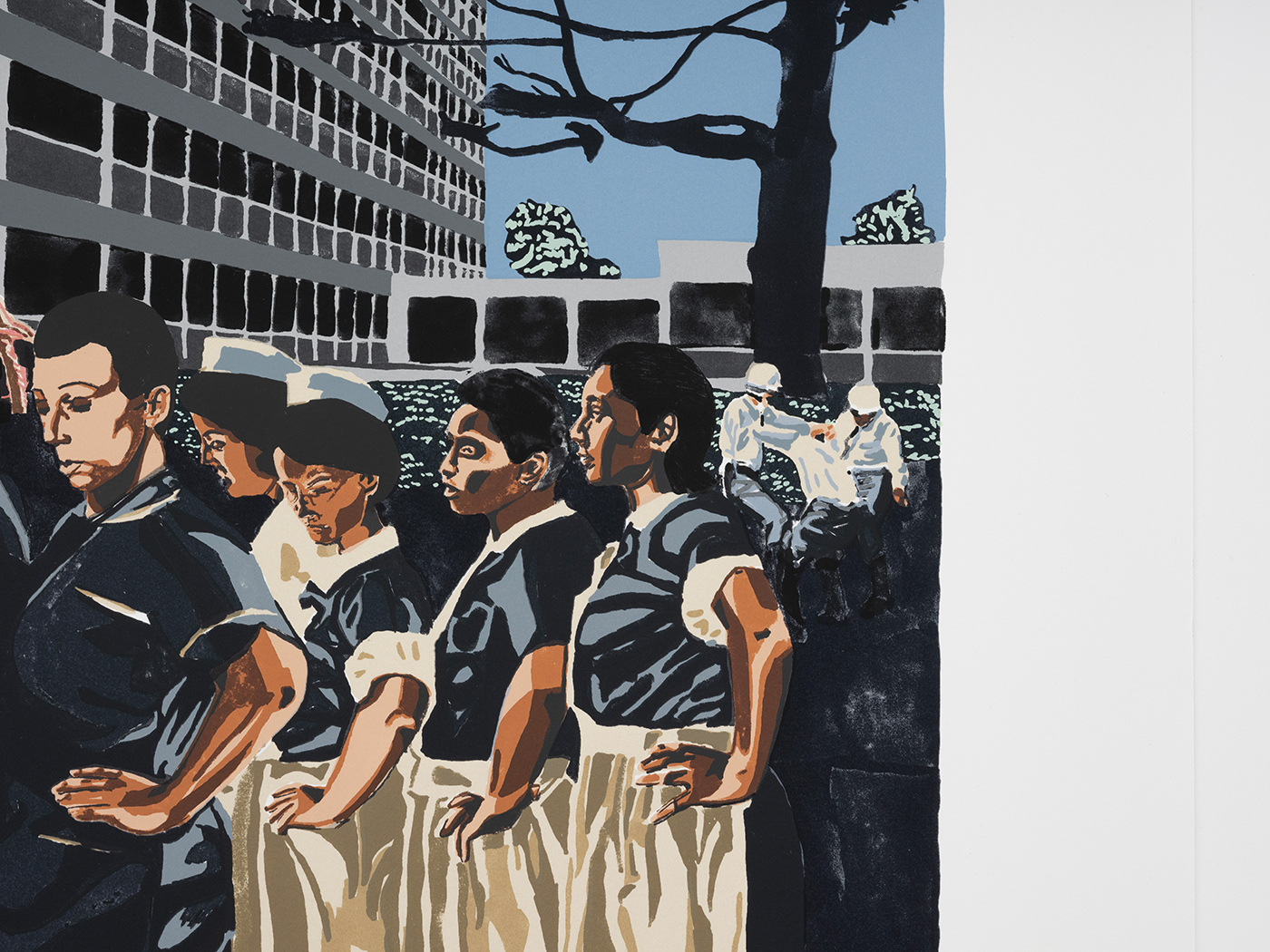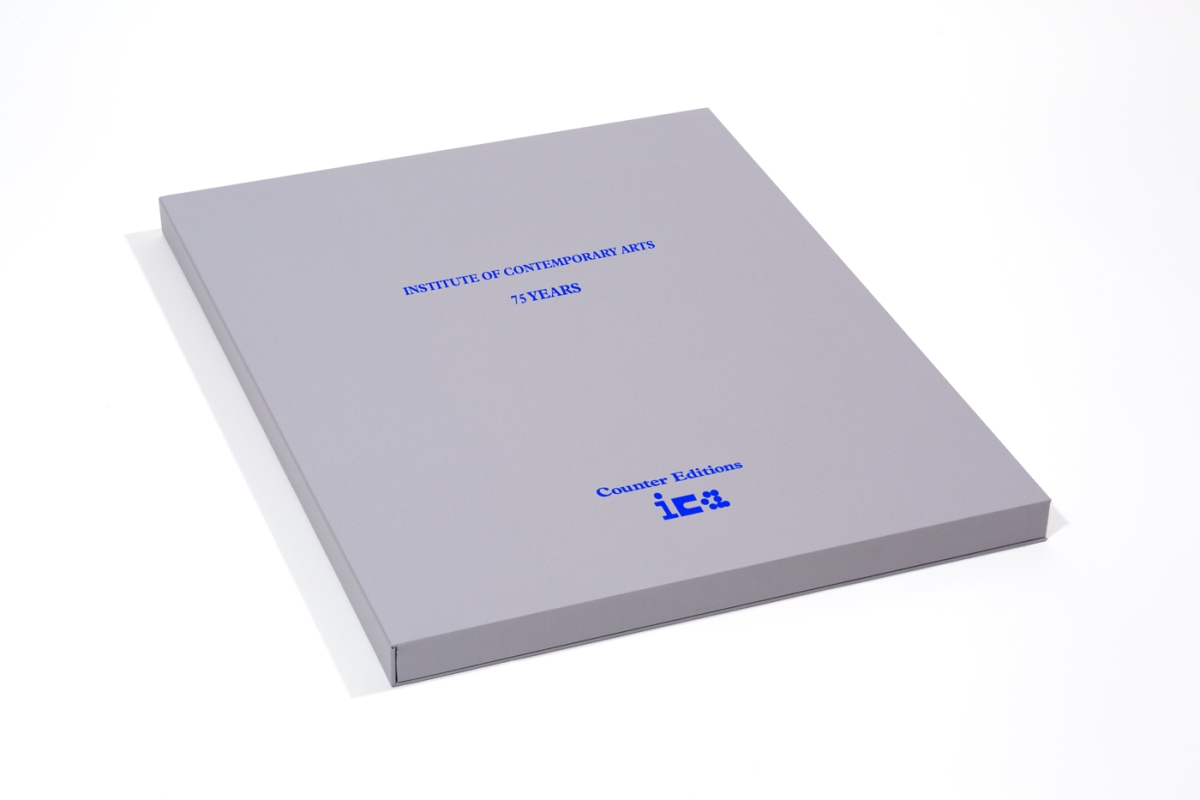The Strike (2023)
Standard UK (3-5 days): FREE
EU (3-5 days): typically £30 - £50
US (3-5 days): typically £60 - £75
Shipping rate will be calculated at the checkout once you have entered your shipping address.
We use UPS to ship your order. This is a fully trackable secure service which requires a signature on delivery.
Prints will be flat packed in our specially designed packaging.
Hannah Quinlan and Rosie Hastings, along with seven other leading international artists, were asked to create a print to celebrate the ICA's 75th anniversary.
Available individually or as part of a boxset. View boxset here.
The Strike (2023) was made in response to the UK’s ongoing nurses’ strike and highlights the massive scale of the modern workers’ movement, while bringing in the disjointedness and the complexity of the discourse surrounding it. Like Italian frescoes of the Renaissance, Quinlan and Hastings' works are loaded with visual symbolism that both tells a story and sends a moral message.
Hannah Quinlan and Rosie Hastings (b. 1991, Newcastle/London)
Hannah Quinlan and Rosie Hastings use the traditional medium of fresco painting to depict street scenes showing groups of people portraying various power dynamics, class and social relations and positions of authority. Their collaborative work is linked to their ongoing research and exploration into the relationship between public space, architecture, state infrastructure, gender and sexual identity, asking viewers to question what public space looks like.

